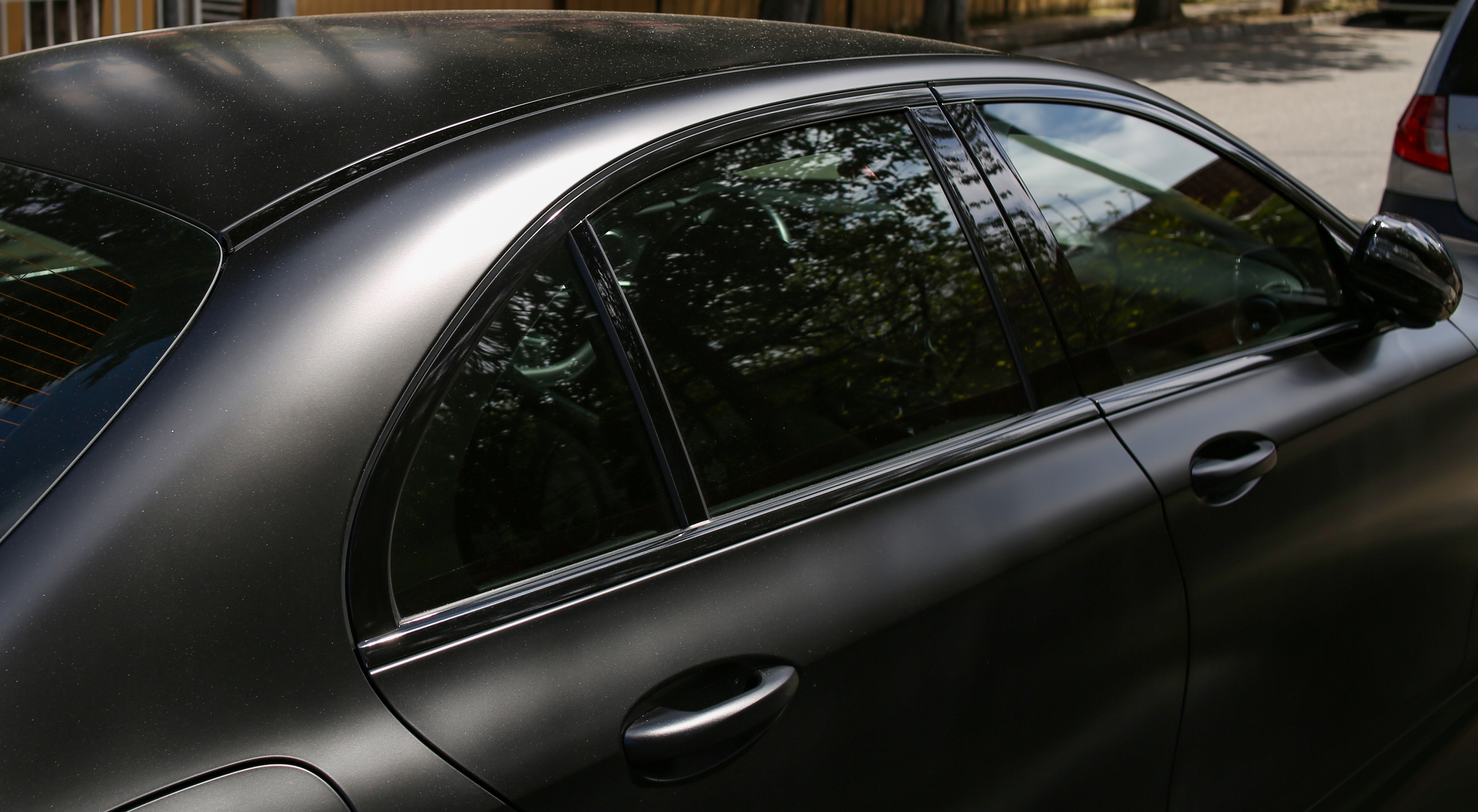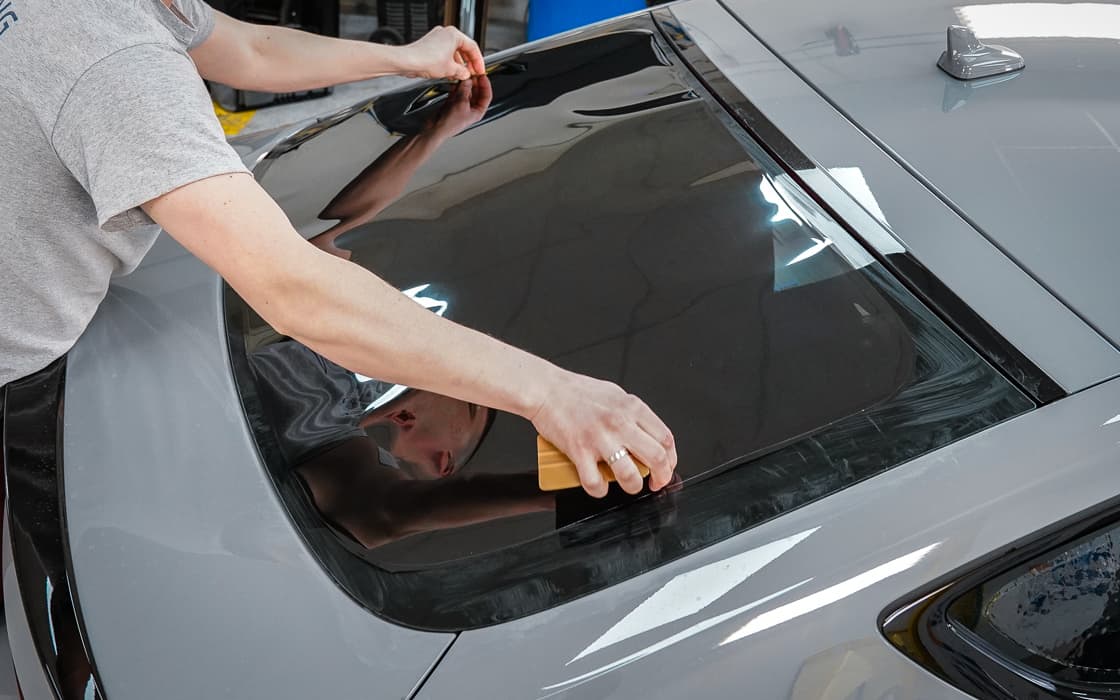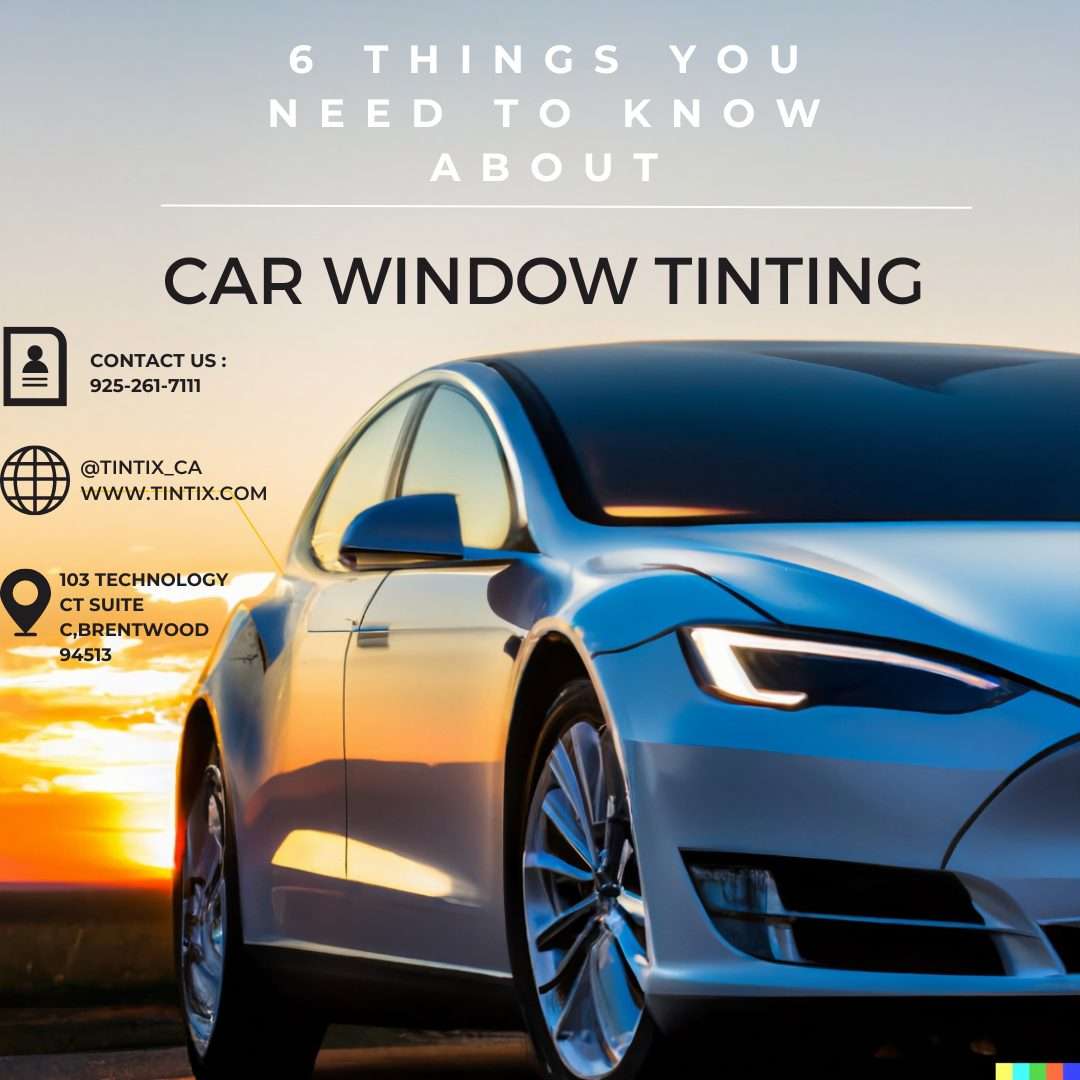A Comprehensive Guide to Understanding Car Home Window Color and Its Benefits
Vehicle home window tinting offers greater than just an aesthetic function for automobiles. It uses different kinds, each with distinctive attributes and benefits. Recognizing these choices, along with legal guidelines and upkeep ideas, is crucial for any kind of vehicle owner. The benefits might substantially boost driving convenience and automobile durability. As one explores the subtleties of home window tinting, the question develops: what sort of color is finest suited for individual demands?
Comprehending Vehicle Home Window Tint: What It Is and Exactly how It Works
Vehicle home window color functions as a protective obstacle that enhances vehicle visual appeals while supplying practical benefits. This slim film is put on the interior surface of automobile windows, minimizing glow and blocking dangerous ultraviolet (UV) rays from the sun. By filtering sunshine, auto window tint helps to manage the interior temperature level of the automobile, causing raised comfort for passengers and minimized reliance on air conditioning.Additionally, it safeguards the vehicle's interior from fading, preserving both upholstery and dashboard materials. The color can also boost personal privacy, making it harder for outsiders to see inside the car. Furthermore, certain sorts of window tint can enhance safety; in case of a crash, the movie assists hold destroyed glass with each other, lowering the risk of injury from flying shards. On the whole, vehicle home window color offers both practical and aesthetic functions, making it a popular option among car proprietors.
Kinds Of Window Color: An Introduction of Options
When considering home window color choices, numerous kinds are offered, each with distinct qualities. Dyed, metalized, and ceramic home window colors offer differing levels of warm being rejected, UV protection, and visual appeal. Recognizing these distinctions can help lorry owners make educated selections based upon their demands and preferences.
Colored Home Window Tint
Dyed window tint represents a preferred choice among car proprietors seeking a reliable and inexpensive method to enhance their automobile's visual appeals and personal privacy. This sort of tint is created by placing a layer of dye in between an adhesive layer and a protective layer, causing a dark appearance that reduces glare and enhances visual convenience. While dyed home window tint properly blocks harmful UV rays, it may not offer the same degree of heat rejection as other color kinds. Furthermore, its color can fade gradually, potentially diminishing its efficiency. Despite these downsides, dyed window tint stays favored for its cost-effectiveness and capacity to offer a sleek, elegant want to various car versions.
Metalized Home Window Color
Metalized home window color supplies a balance of design and functionality, making it a prominent option amongst car proprietors. This kind of tint includes metal fragments within the movie, improving both visual appeal and warmth being rejected. The reflective top quality of metalized color assists to minimize glow and enhance privacy, while likewise supplying UV security, which safeguards the car's inside. In addition, metalized home window color can strengthen window stamina, potentially avoiding smashing during accidents. However, it is very important to note that the metal parts can interfere with electronic signals, such as GPS and mobile phone function. On the whole, metalized window tint provides a reliable remedy for those looking for a mix of longevity, appearance, and sunlight security for their cars.
Ceramic Home Window Tint
Ceramic window tint represents an advanced choice in the spectrum of auto home window films, providing distinctive advantages over typical tints. Unlike dyed or metalized films, ceramic colors use sophisticated ceramic bits, which properly reject warm and UV rays without compromising visibility. This technology ensures that cars remain cooler, lowering reliance on air conditioning and enhancing fuel performance. Furthermore, ceramic home window tints are less most likely to conflict with digital gadgets, such as GPS or mobile signals, making them a functional option for modern lorries. Moreover, their sturdiness and scrape resistance add to a much longer life-span compared to other sorts of colors. Overall, ceramic home window tint provides premium performance, comfort, and security, making it a preferred option for discerning vehicle proprietors.
Benefits of Automobile Home Window Tint: Beyond Aesthetic Appeals
While lots of people associate automobile window tint with enhanced style, its advantages expand far past simple aesthetic appeals. One substantial benefit is warm decrease; home window tint can obstruct up to 99% of dangerous UV rays, protecting and keeping the indoor cooler upholstery from fading. This not only enhances comfort during hot climate but additionally minimizes dependence on cooling, bring about enhanced gas efficiency.In enhancement, automobile window tint gives an included layer of personal privacy and protection. Colored windows make it difficult for outsiders to see inside the lorry, which can deter theft and shield prized possessions. Furthermore, several colors reinforce the glass, decreasing the chance of shattering in the occasion of a mishap, consequently improving safety.In enhancement to these practical benefits, auto home window tint can also contribute to glow reduction, enhancing presence for passengers and chauffeurs alike. This complex technique to comfort and safety and security makes home window tint an important investment for automobile owners.
Legal Factors To Consider: Tinting Regulations by State
Prior to committing to automobile home window color, automobile proprietors have to navigate a complicated landscape of tinting regulations that vary by state. Each state has specific legislations controling the acceptable levels of color darkness and reflectivity for different home windows, consisting of windscreens, front side windows, and back home windows. These laws typically include visible light transmission (VLT) percentages, which determine how recommended you read much light can travel through the colored glass.Some states permit darker colors on rear windows while limiting front side and windscreen colors for safety reasons. Furthermore, particular states might require a certificate from the manufacturer to confirm compliance with tinting laws. Violating these laws can lead to penalties, necessary elimination of the color, or both. It is essential for vehicle proprietors to investigate their state's laws thoroughly to guarantee legal compliance prior to mounting home window color. This persistance can conserve money and time in the long run.
Selecting the Right Color: Aspects to Consider
When choosing the appropriate home window color for a vehicle, a number of important elements enter into play. Color darkness degrees, UV protection rankings, and conformity with lawful policies are vital factors to consider to ensure both aesthetic appeals and functionality - Car Glass Tinting. Reviewing these elements will certainly assist individuals make an informed decision that meets their demands and adheres to neighborhood regulations
Tint Darkness Levels
Picking the appropriate color darkness degree is important for accomplishing the preferred equilibrium in between visual appeals and performance in automobile window tinting. Different states have differing lawful laws pertaining to tint darkness, which can affect the choice. Normally, tints are gauged in percentages, with lower percents indicating darker shades. Darker tints provide raised personal privacy and a smooth look but can decrease visibility, especially at evening. On the other hand, lighter colors preserve an even more open feel, ensuring adequate presence while still giving some warmth and glare decrease. When making a decision, individuals must consider their driving habits, local legislations, and personal choices. Inevitably, the appropriate color darkness degree improves the vehicle's look while making certain safety and security and compliance with lawful standards.
UV Defense Score
Tint darkness degrees play a considerable duty in the general performance of vehicle window tinting, however another vital factor to review is the UV protection ranking of the chosen tint. This ranking shows the portion of dangerous ultraviolet rays that the tint can obstruct. High-grade colors commonly supply 99% or even more UV protection, securing passengers and the vehicle's inside from sun damages. Extended exposure to UV rays can bring about skin issues and fading of furniture, making a high UV protection rating necessary for wellness and longevity. When selecting window tint, consumers should prioritize this score together with darkness levels to ensure maximum comfort and safety while driving. Understanding these elements help in making an educated choice when investing in auto window tinting.
Legal Laws Conformity
Recognizing regional lawful laws is important for any person thinking about car home window tinting. Each state or area has details laws controling the allowable degrees of tint darkness and reflectivity for different home windows. These regulations often specify the visible light transmission percentage, figuring out exactly how much light can pass with the colored glass. Non-compliance can cause penalties, obligatory removal of the tint, or problems throughout car evaluations. In addition, some areas may have restrictions on the usage of particular tinting products, requiring customers to choose items that meet security standards. dig this Consequently, it is essential for automobile proprietors to research their local regulations extensively prior to picking window color to assure compliance and avoid possible legal issues.
Installment Process: DIY vs. Professional Providers
Just how does one choose between a do it yourself installment and employing professional services for auto window tinting? The selection often hinges on spending plan, experience, and preferred results. A do it yourself method can be cost-efficient, allowing individuals to save money on labor prices. It calls for a particular level of ability and understanding concerning the tinting process. Those that are thorough and patient might locate success with DIY kits offered in the market.Conversely, specialist solutions provide knowledge and high-quality products, guaranteeing a remarkable surface. Specialists usually ensure their job, offering satisfaction versus potential problems such as peeling off or bubbling. In addition, they recognize with regional legislations relating to tinting, which can be complex for the ordinary car owner.Ultimately, the choice reflects a balance between cost, individual ability, and the anticipated quality of the tinting work. Each choice has its benefits, and the finest choice depends on specific circumstances and preferences.
Maintenance Tips: Maintaining Your Color in Leading Condition
Keeping the appearance and capability of window tint needs regular interest and treatment, particularly in varying climate condition. To maintain the color, it is necessary to prevent utilizing unpleasant cleansing materials, which can damage the movie or scrape. Car Glass Tinting. Rather, soft microfiber fabrics and mild, ammonia-free cleaners ought to be used for cleaning the colored surfaces.Furthermore, it is suggested to wait at the very least thirty day after setup prior to cleaning the home windows to permit the color to totally stick. Parking in shaded locations or utilizing sunshades can help minimize the fading effects of UV rays and extend the tint's life expectancy. Regular examinations for bubbles, peeling, or discoloration are advised, as very early discovery can promote repair services. Preventing severe temperature level variations, such as pressing hot home windows in cool weather, will aid maintain the color's integrity and appearance over time.
Often Asked Questions

Exactly How Long Does Home Window Tint Normally Last on an Automobile?
Home window tint typically lasts between five to 10 years, depending upon aspects such as high quality, application, and ecological conditions. Regular upkeep and proper care can Click This Link extend its life expectancy, making certain optimal efficiency and look with time.
Can Window Tinting Damage My Cars and truck's Original Glass?
Home window tinting, when applied properly, does not damage a cars and truck's initial glass. Inappropriate setup or low-grade materials may lead to concerns like peeling off or gurgling, potentially influencing the glass's honesty over time.
Is Home Window Tinting Safe for All Kinds of Autos?

Will Window Tinting Void My Auto Guarantee?
The question of whether window tinting gaps an automobile guarantee often depends upon the manufacturer's policies. Typically, if the color does not damage the car, warranties generally continue to be undamaged. However, consulting the supplier is suggested.

Can I Get Rid Of Home Window Tint Myself if Needed?
Getting rid of window color oneself is feasible, yet it needs mindful attention to avoid harming the glass. People ought to make use of appropriate tools and methods to ensure an effective removal without leaving sticky residue or scratches behind. While colored home window tint efficiently obstructs damaging UV rays, it might not supply the very same degree of warmth being rejected as other color types. Ceramic window tint stands for an innovative option in the range of automobile home window movies, providing distinct advantages over traditional tints. Prior to devoting to automobile home window color, automobile proprietors have to browse a complicated landscape of tinting policies that vary by state. These laws often include noticeable light transmission (VLT) portions, which determine exactly how much light can pass via the colored glass.Some states allow darker tints on back windows while restricting front side and windscreen colors for security factors. Color darkness levels play a substantial role in the general efficiency of vehicle window tinting, yet one more essential aspect to examine is the UV security score of the selected tint.